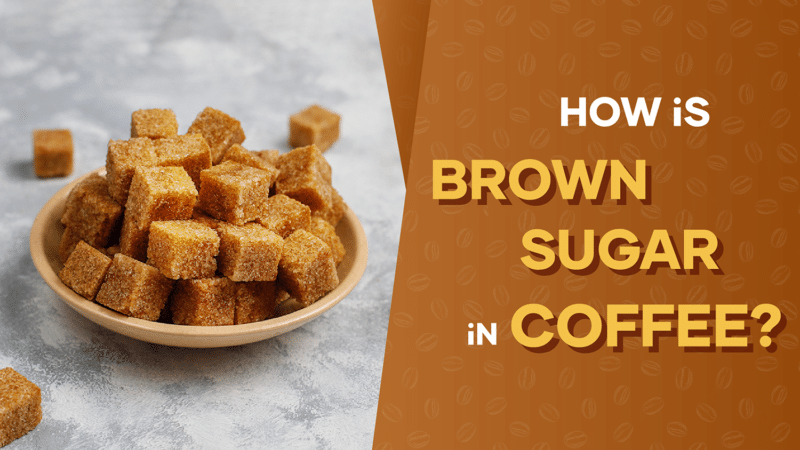Many people capture this little joy and happiness sipping warm coffee in the morning. It’s a survival juice for the majority of us, young and old, rich and poor, privileged and less privileged. Since we insert coffee to begin our day, the quality of the coffee is rather the priority. The flavour is equally important. On those days that you take a cup of bland coffee with an unfavourably disappointing taste, you find yourself unhappy or in a not so good mood.
That’s why fresh coffee is a huge factor that makes good days. Because of the distinct preferences, coffee can be made to fit those tastes we desire. Some go for sugar-free, some go for white while others go for brown sugar or other alternative sweeteners. More importantly, part of coffee addicts like to put salt and are creative to blend the coffee with other different flavours. There has been conflicting information about which type of sweetener is better or the best, brown and white sugar is also a never-ending topic of discussion.
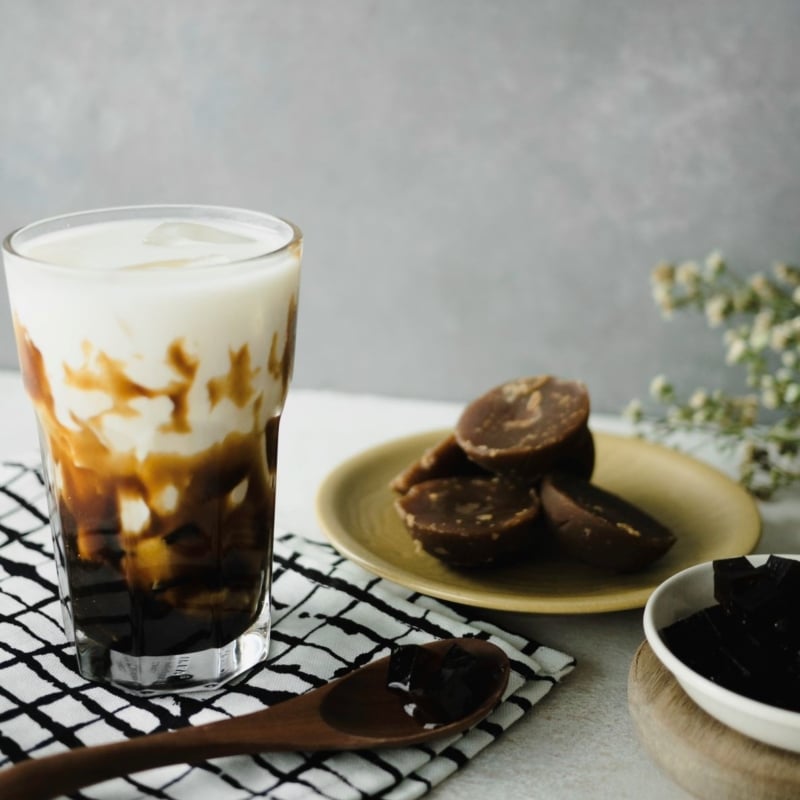
Contents [show]
About Brown Sugar
Brown sugar, just like other types of sugar, originates from the same crops either the sugarcane or sugar beet plant, the tree for sugar production. In fact, it’s either an unrefined or partially refined soft sugar consisting of residual molasses content that makes the color brown. Interestingly, brown sugar can be made by adding white sugar with molasses. That’s simply what brown sugar is made of.
The sweet history of brown sugar unsurprisingly traced back to the origin of cane sugar, the natural one from plants. Sticky and compact, brown sugar is liked by some and disliked by some because of its odd appearance. There are many types of brown sugars which will be explained later in this article. Now, let’s learn about sugar from scratch.
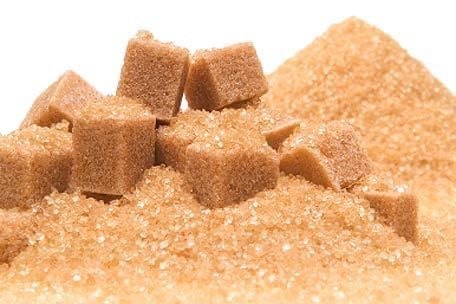
Brown Sugar in Coffee
We are all pretty sure that brown rice tastes very different from white rice. How about brown sugar? It’s somehow still debatable whether coffee with brown sugar and coffee with white sugar tastes the same. So, can you distinguish their distinct taste when being put in a cup of coffee? If you’re the type of person to drink black coffee, then the question is not for you, but it makes you curious too, doesn’t it? For people who often take coffee with a dash of sweetener, you might have already tried both brown and white sugar in your cup. We are eager to learn about your experience drinking it as well.
Some claim that brown sugar taste complements coffee taste notes. Additionally, it’s said that brown sugar can be used perfectly in all your favorite coffee drinks. There’s a hypothesis that brown sugar bring a more earthly and natural taste to the coffee, and white sugar tastes a little more artificial. Thus, this is not verified. No research result has been revealed about this.
However, Personally I discern little to no difference consuming coffee with white or brown sugar. It’s just quite richer in its flavor. So, it comes down to our own personal preference. Research has shown that brown sugar has no great nutritional benefits over white sugar, just a bit more minerals like mentioned earlier. Now, we arrive at another question of whether or not brown sugar is better than white sugar in any other way? Is it a better diet?

Looking at its calories, it’s almost the same, only 1 calorie difference per teaspoon. Does that make brown sugar healthier? The answer to this question is not really. Most of us with good health can opt for any type of sugar we prefer since the effects are almost similar. Just because you add a teaspoon of brown sugar to your coffee, it doesn’t in any way make your coffee healthier. My suggestion here is that the effects, benefits, and consequences you get from drinking coffee are no different, may you use white or brown sugar. Our primary purpose of adding sugar in our coffee is to lessen its bitterness, so we rather stop overthinking about having a cup with one or two less calories. It’s not a big deal.
All that matters is that we enjoy our coffee. Now, we have settled down all the myths of brown and white sugar. I hope you are clear or at least clearer after reading this passage. From this moment onwards, may all of us just peacefully sip our coffee without having to worry about anything.
I’m not an expert in the topic of sugar. However, from my research, I’m more than happy to share with you all these results I have found out so far. Without further ado, let’s talk more about brown sugar and it’s type. Yes, there are three more types of brown sugar. Let’s learn about it together.
Different Types of Brown Sugar
Brown sugar comes in brown color. Yet, some are more brown than the others. You can find two readily available brown sugars on sales; light brown and dark brown. It’s sold everywhere. I bet most of you have already tasted it. We will explore more on how these two are different. At the same time, we’ll also study other types of brown sugar as well.
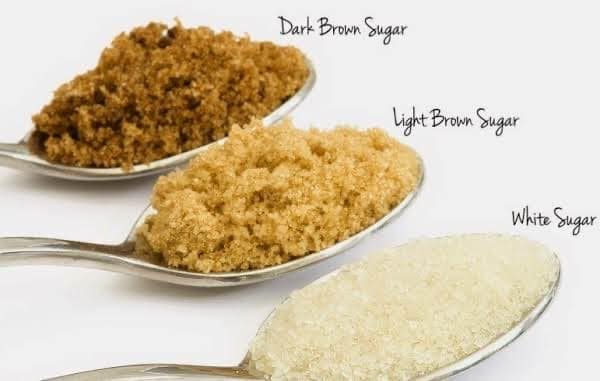
1. Light Brown Sugar
Light brown sugar is very light in color. Most of the molasses are already extracted from this sugar; therefore, it’s quite refined. We have seen that people use light sugar for baking, sauces, pudding, and glazes. The taste is less rich than the dark brown, but it simply tastes so good. It works well with pudding and caramel.
2. Dark Brown Sugar
Dark brown sugar, additionally, possesses more molasses level than light brown sugar. It’s almost natural and very rich in flavor. Using dark brown sugar in your food and drink adds more sweet to your deserts, sweets, meals, and even savory foods. Although texture differences, dark brown sugar simply just contains some more contents than the light ones. Fascinatingly, your final product is served with stronger shade of brown color which makes the food more attractive. Approximately, it contains about six and a half percent more molasses than light brown sugar. You can use it in milk tea drinks, coffees, and every other type of drinks. Besides, it makes a wonderful caramel flavor too.
3. Muscovado Sugar
This is another type of brown sugar, the darkest type of all. Natural as it is, it’s an unrefined cane sugar without any molasses extraction. By far, Muscovado makes the recipe more interesting, deep, enriching, and delicious. We highly recommend if you haven’t experimented using this sugar already. For those who look for natural sugar with full minerals, this is the best you can find. Muscovado should be in your stock.
4. Turbinado Sugar
Another brown sugar that make your dishes and pudding super rich and good looking is here. Turbinado sugar is pretty brown but not too much. It’s the immediate result of the first sugar cane pressing. Some molasses are removed, but a lot remains. If you’re wondering, it comprises more molasses than light brown sugar but less than the dark brown sugar one. One thing to bear in mind is that Turbinado is drier than those types we presented above. What’s more, the grain is larger than light and dark brown sugar. Our suggestion is that you rather not use it in milk tea, or coffee because it doesn’t dissolve quickly. Instead, it works fine as a recipe for pudding.
5. Demerara Sugar
Firstly, do you find this name adorable? Demerara sugar is another brown sugar, but it’s a drier, bigger, and lighter in color than Turbinado one. Since the grain is large, it’s not suitable to put in drinks at all. The thing is that it also contains molasses more than white sugar but less than the types described before. The look is simple. It is quite brown and mostly used for beverages. Some people use this less processed sugar to create white sugar by pressing it more and taking away molasses that are left.
The presentation of 5 distinct types of brown sugar has come to an end. Some of you might have this question pop up in your head, the question about which is the better or even healthier one? Different look and size notwithstanding, at the end of the day, they are all sugar. What I have learnt from this research about this topic is that sugar is sugar. The only major is the amount of molasses; some types contain a higher level of it than the others. Nutritions vary but very slightly.
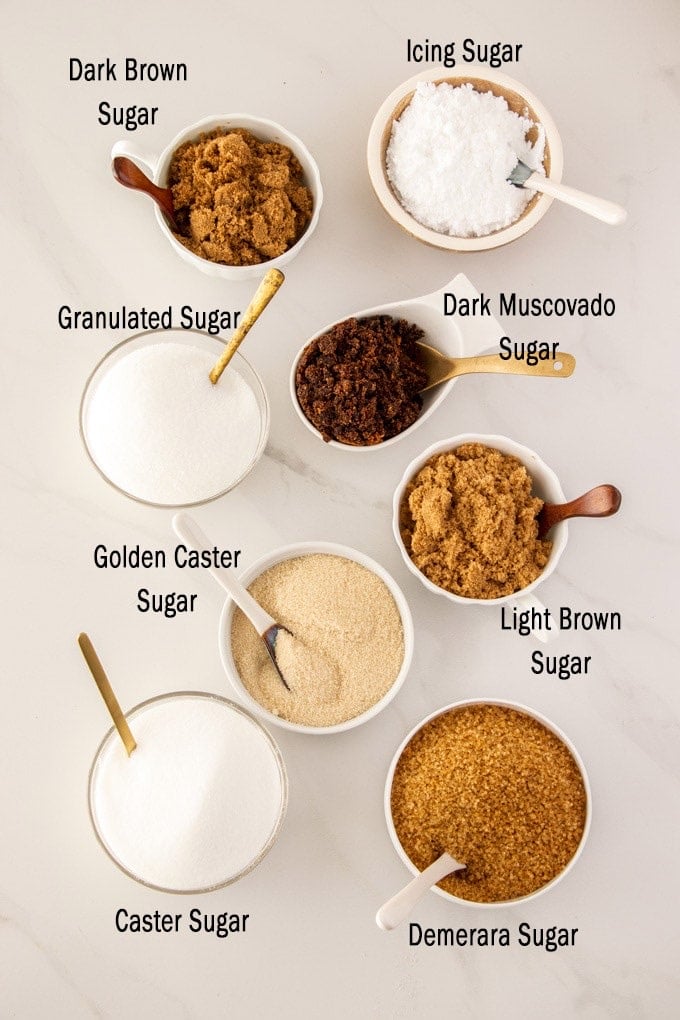
The Differences Between Brown Sugar and White Sugar
Aside from the similarities, we can clearly see some minor differences between the two sugars. Technically speaking, the taste and color are what differentiate brown sugar form white sugar. In term of nutrition, you may have heard that brown sugar is healthy and whatsoever. It’s because brown sugar contains a little more minerals than white sugar, notably calcium, iron, potassium, and magnesium, but white sugar doesn’t. According to the United States Department of Agriculture, brown sugar consists of approximately 17 kilocalories per teaspoon whereas the white sugar has about 16 kilocalories per teaspoon. Another thing to keep in mind is that white sugar is highly refined while brown is only partially or slightly refined.
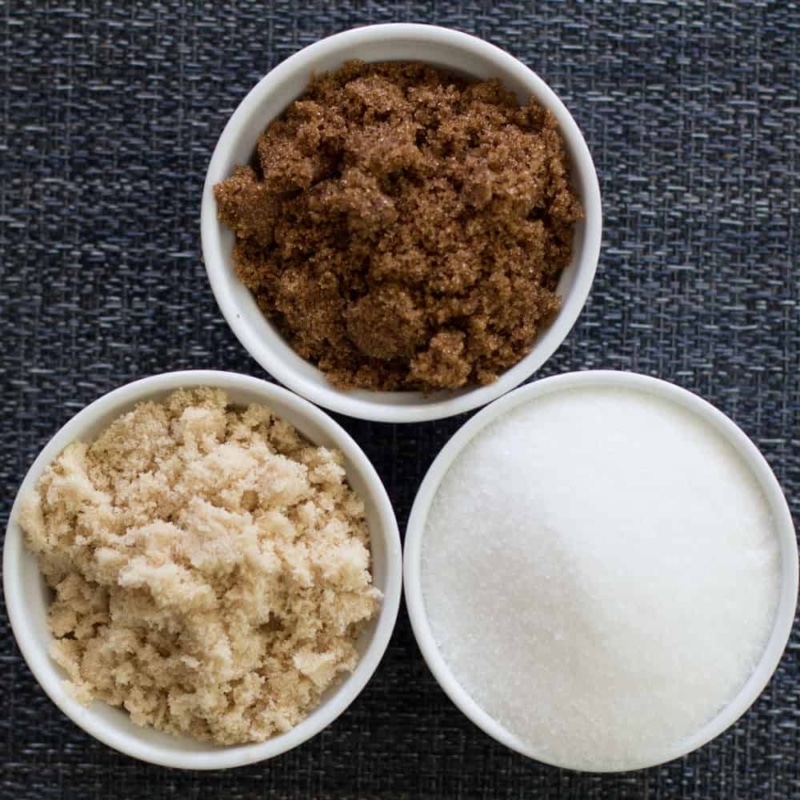
Here’s the interesting fact about both types of sugars. Brown sugar is sometimes referred to as raw sugar. When molasses are extracted from it, it mostly becomes white sugar. Oppositely, it can be the other way around. To make brown sugar, you just need to add molasses content to white sugar. That’s it. Simple as it is, it’s not so different.
Both are coffee supplements. When it comes to brown sugar in coffee, does it taste different? Let’s find out.
Can You Make Your Own Brown Sugar at Home?
Technically speaking, you can make brown sugar on your own. First and foremost, you must have the ingredient, white sugar and molasses. Molasses is what defines whether the sugar will be white, light brown, lighter brown, dark brown or darker brown. To make your sugar brown, you pour molasses on top of your white sugar in a bowl and stir it properly.
If you want light brown sugar, mix 1 teaspoon of molasses in 1 cup of white sugar. If you want dark brown, mix 2 tablespoons of molasses in 1 cup of white sugar. And if you have light brown and want to transform it into dark brown sugar, you just add 1 teaspoon of molasses in your cup of light brown sugar. After you mix it, you stir it well until it blends. Then, it’s all done. Your homemade sugar is ready.
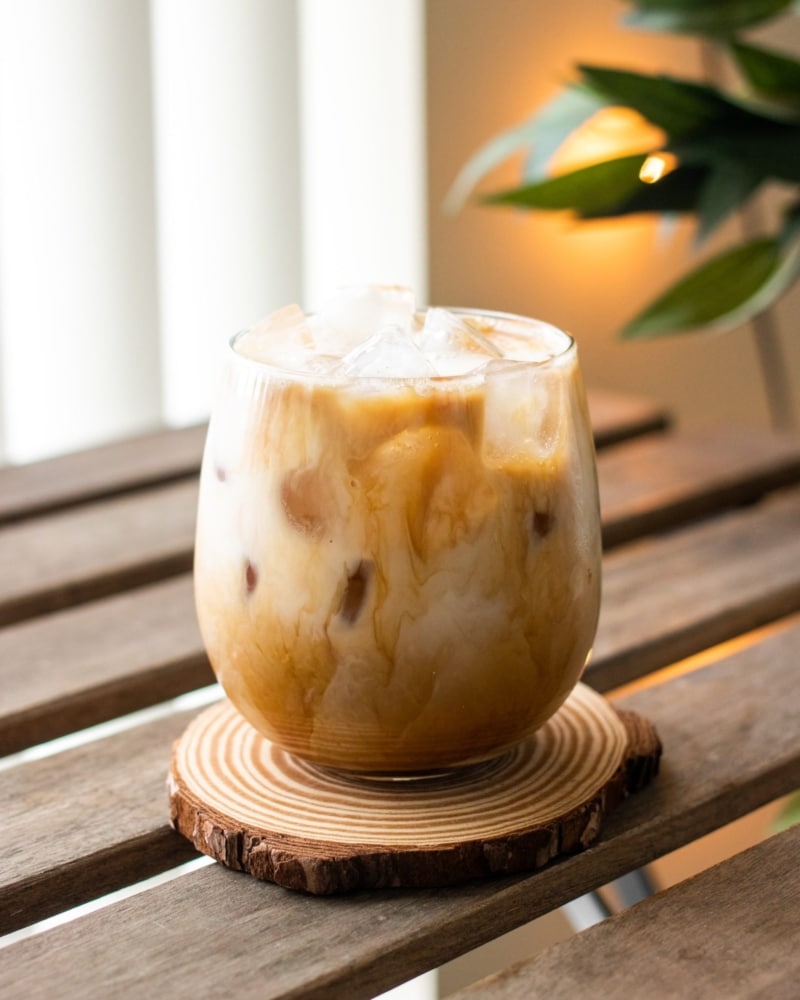
Start your brown sugar coffee with your newly mixed product! Be proud of yourself because you now can make your own brown sugar at home! Cheers with your coffee! Believe it or not, I already made my brown sugar at home and it tastes amazing. So, I urge everyone to make it too, especially those of you, curious readers and coffee lovers.
Conclusion
Once again, I’m learning about sugar just like you, beloved readers. This research has solved my misunderstanding about sugar and its long story myths. To reiterate and make our story short, sugar derives from the same sources. It’s the pressing and processing phase that allow sugar to be formed in many colors, white, light brown, dark brown. Now that you know everything you need to know, let’s go back to our coffee topic. The perfect verse of sugar is the one you fancy and the one that goes well with your foods and drinks. Let’s orchestrate our happy day with brown sugar in our coffee.
One last friendly reminder is that you better be health conscious. It doesn’t matter if it’s white or brown sugar you put in your cup, but what’s more vital is the amount of daily coffee intake. Coffee complements life, still let’s not be pro caffeinated. Hence, I hope that after reading this article, you also resolve your misconception about brown sugar in coffee just like I do. Enjoy your coffee! Enjoy life! Best of luck to all our readers. See you soon with another topic.
References
- The Claim: Brown Sugar Is Healthier Than White Sugar|The New York Times| O’connor
- Brown Sugar vs. White Sugar: What’s the Difference?|Health line| Susan McCabe
- How Are Dark and Light Brown Sugars Different?| Martha Stewart| Kelly Vaughan
- Types of Brown Sugar| Eat By Date|Cindy
- Learn How to Make Brown Sugar in Minutes| The Spruce Eats| Erin Huffstetler
